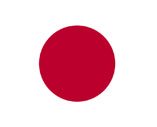 Japan shocked and delighted the world with their sensational Pool B win over South Africa in the Rugby World Cup. No one was expecting the team from Asia to do well, certainly not against the two-time World Cup winners, so today’s Japan v Scotland game is one to watch.
Japan shocked and delighted the world with their sensational Pool B win over South Africa in the Rugby World Cup. No one was expecting the team from Asia to do well, certainly not against the two-time World Cup winners, so today’s Japan v Scotland game is one to watch.
This is Tamebay though, so our main interest in Japan is from an ecommerce perspective. Julia Arena from Intercultural Elements has kindly agreed to share her experience and knowledge of selling to Japan. With marketplaces making it easy to target different territories around the world it’s easy to forget cultural differences and often small changes make have a big impact on your success so here’s what you need to know before you sell your first products to Japan:
Selling to Japan
 With 20 million Internet users and 50 million mobile phone users, Japan is a likely target if you are looking to expand your business internationally. Japan holds the world’s third highest GNP and represents 10% of the world’s economy. Moreover, e-commerce sales are expected to reach $135 billion by the end of the year. This significant advance highlights the strong and consistent growth of ecommerce in Japan, and signals opportunities moving forward.
With 20 million Internet users and 50 million mobile phone users, Japan is a likely target if you are looking to expand your business internationally. Japan holds the world’s third highest GNP and represents 10% of the world’s economy. Moreover, e-commerce sales are expected to reach $135 billion by the end of the year. This significant advance highlights the strong and consistent growth of ecommerce in Japan, and signals opportunities moving forward.
However, Japanese expansion can prove much trickier than other marketplaces, as some of our clients have witnessed first-hand. After all, only 3-5% of Japanese people speak English well – buyers expect to have a localized shopping experience. Human native translation proves itself vital when expanding abroad and even more so when expanding into marketplaces in Asia. Our sellers consistently emphasize the importance of human translation to avoid the unfortunate consequences of machine translation tools.
Why native speaking customer services is important for Japan
In the specific case of Japan, why is it important to have a native speaker Customer Service (CS) representative and a native professional taking care of the translation of your products?
For starters, Japanese is a highly “politeness-oriented” language. While many European languages only distinguish between a formal and an informal pronoun (e.g. du and Sie in German, tu and lei in Italian), Japanese has many honorifics and ways to show respect. The dynamics of Japanese honorific speech are so deeply rooted and complex that a non-native speaker, although competent in the language, may not understand all the subtleties in meaning and usage.
Writing text in Japanese is not only a matter of producing grammatically correct sentences, but also of choosing the right phrasing and appropriate polite forms. And that is especially important in offering a good customer service experience.
In Japan the customer really is always right!
As our Japanese CS representative Tomo explains, not only are customers always right in Japan, but etiquette dictates that they be treated with a lot of reverence: that means addressing customers in a humble and deferential manner and using respectful forms of language to elevate them. It does not come as a surprise that Japan is often cited by foreigners as a place where service is beyond excellent.
[Editors note: I remember a briefing before a meeting with a Japanese company and being told when given a business card you should accept it with two hands, carefully read the card and then keep it on the table in front of you during the meeting – Politeness really is deeply ingrained in the culture of Japan]
Selling in Japan requires attention to detail
Of course, customers expect to receive a quality product, but they also care a lot about all the details that accompany the item, such as packaging and presentation. They want to be able to trust the seller and therefore the seller needs to show everything was taken care of with great attention. Tomo recounts that more than once Japanese customers have complained about something not necessarily related to the product itself: e.g. a buyer noted the tag on her t-shirt was slightly folded, even though the t-shirt itself was perfectly fine, while another buyer complained her order arrived in a bag and not in a box. It is therefore advisable for sellers looking to expand to Japan to pay attention to the little details. Japanese customers will definitely appreciate it!
Don’t use template emails for Japan
Another noteworthy tip: Japanese dislike template answers. If they write an email concerning a faulty item or a problem with the order, they expect more than a sterile standard reply, no matter how polite it is. They want to receive personalized clarification regarding their specific inquiry, as well as the impression that the person assisting them is taking particular care of their case.
Last but not least, trusting a non-native speaker to take care of your e-mails may end up jeopardizing your business. A recent client of ours came to us after their account had been suspended on Amazon JP for poor non-native customer service. Our native Japanese representative contacted Amazon, managed to solve the issue and have our client’s account up and running again.
For all these reasons, if you’re looking to expand to the Japanese market, we heartily recommend having the work done by native speakers and e-commerce experts.
The key takeaway: Japanese expansion is more hands on than most Western countries and requires more attention to detail, but the impressive growth of this often underappreciated e-commerce market makes it as desirable as ever!
If you’d like to know more about Intercultural Elements you can contact them through their website








